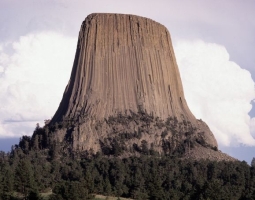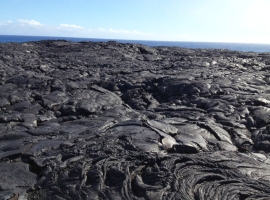  Igneous rocks are formed from the cooling, crystallization and solidification of molten rock. The word igneous derives from 'ignis', the Latin word for 'fire'.
Igneous rocks are formed from the cooling, crystallization and solidification of molten rock. The word igneous derives from 'ignis', the Latin word for 'fire'. Melted rock originates deep in the Earth near active plate boundaries or hot spots, and rises to the surface. Molten rock is known as magma; at the surface it is called lava. There are two broad types of igneous rocks: Intrusive (plutonic) rocks and Extrusive (volcanic) rocks. Intrusive (Plutonic) Rocks Intrusive igneous rocks solidify within the Earth. These rocks are also known as plutonic rocks, named for Pluto, the Greek god of the underworld. Intrusive igneous rocks are wholly crystalline and have large crystal sizes visible to the naked eye, because they cooled slowly. 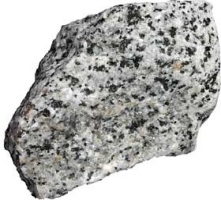 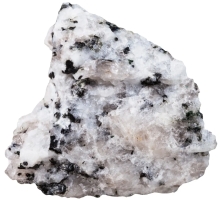 Above: intrusive igneous rocks granite and diorite 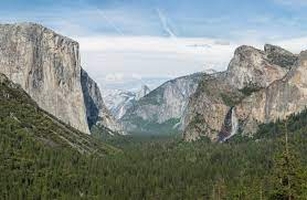 Many national parks were founded for their geology, and Yosemite National Park is no exception.
Many national parks were founded for their geology, and Yosemite National Park is no exception.Yosemite is known throughout the world for its exceptional high cliffs and rounded domes. Visitors to the park, including hikers to rock climbers, experience a landscape dominated by the intrusive igneous rock formations of granite. Extrusive (Volcanic) Rocks Extrusive igneous rocks erupted onto the surface or into the atmosphere. Extrusive igneous rocks are also termed volcanic rocks, named for Vulcan, the Roman god of fire. Volcanic rocks have small crystal size and are usually fine-grained, having formed after rapid cooling at the time of eruption. 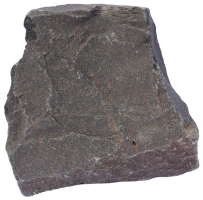 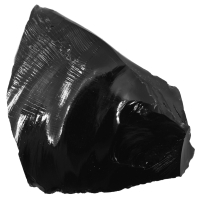 Above: extrusive igneous rocks basalt and obsidian
Classification by Chemical Composition Igneous rocks are mostly made of the most common elements found in the Earth’s crust. In descending order, they are: Almost all igneous rocks are silicates, meaning that silicon and oxygen are the two most common elements in them. The two major divisions of igneous rocks based on composition are: |
